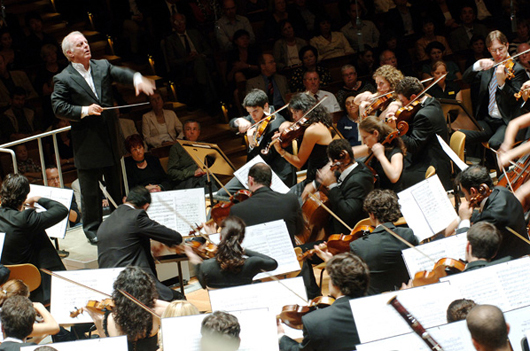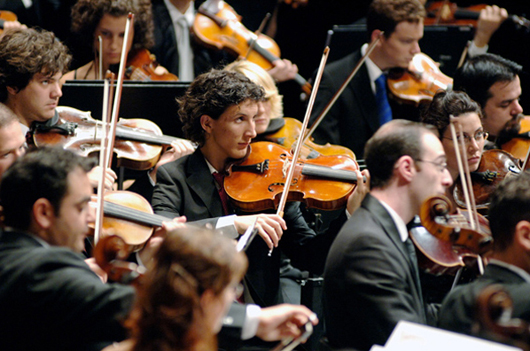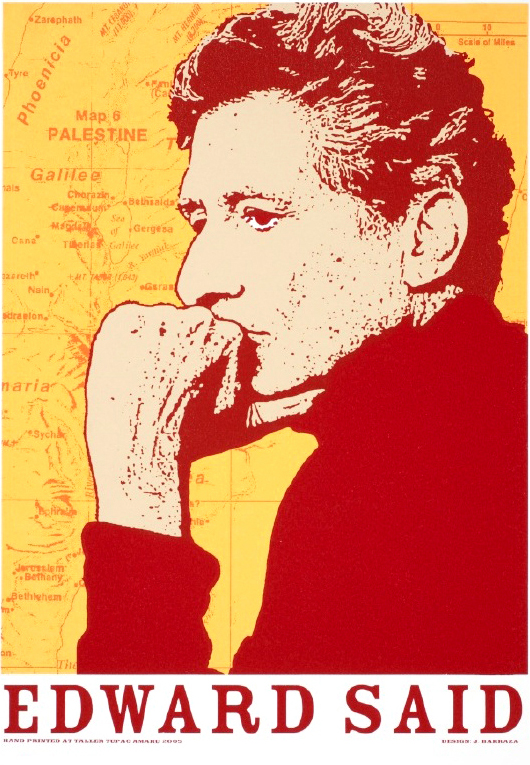SAM DURANT
EDWARD SAID, MUSIC AT THE LIMITS AND PARALLELS AND PARADOXES: EXPLORATIONS IN MUSIC AND SOCIETY
— I first read the author of Orientalism many years ago, and (along with Chomsky, Finkelstein and Khalidi) began to develop an understanding of the Israel/Palestine conflict and its history. Although penned in 1979, The Question of Palestine remains perhaps the most beautifully written, penetratingly critical (of both sides) and compassionate argument for the Palestinian cause. His 1993 lecture that was published as Representations of the Intellectual brought the ethical dimensions of being an intellectual (or cultural producer) into sharp focus, one can’t escape the seriousness of his argument: we are involved in what we see, hear and read in the news every day- the barbaric things that the powerful do to the powerless (otherwise known as civilization)- whether we like it or not, as Howard Zinn succinctly put it, “You can’t be neutral on a moving train”.
The fact that this same man was also, arguably, the most deeply and broadly knowledgeable interpreter of “western” classical music in the U.S. didn’t really dawn on me until relatively recently. I would occasionally read his music columns in the Nation, where he was music critic for many years, simply taking his brilliant, literary and often scathing reviews for granted. Now I know better. I am still angry that he died much too soon and Music at the Limits reminds me again of how much has been lost with his passing, and for me personally, how much I missed by just not paying close enough attention.
It’s hard to understate how completely in another realm Said was as a music critic, you can’t really compare his work to other music criticism (except perhaps Adorno), he was just doing something completely different. I bought Music at the Limits initially because of the essay on Sergiu Celibidache, the legendary and eccentric Romanian conductor of the Munich Philharmonic who never made a recording, insisting that music must only be heard in live performance. Celibidache turned the New York concert world on its ear (no pun intended) when he performed only one piece, Bruckner’s 4th Symphony, at Carnegie Hall for an entire two-hour program. Said understood and wrote about every aspect of the musical performance; the piece of music, its history, the history of its various performances (many of which he attended), the conductor and his history, the composer and his history, the orchestra and its history, its board of director’s history, the audience and the history of audiences, the form of the two hour concert, its history, etc, etc. Nothing was left outside the frame, nothing taken for granted or assumed neutral or natural. He performed a nearly complete analysis on the institution of classical music and did so in virtually every column he wrote while maintaining some of the most compelling and graceful prose in the english language.
In Daniel Barenboim’s forward to Music at the Limits there is a passing reference to the West-Eastern Divan Orchestra, the collaboration that grew from Said and conductor/pianist Barenboim’s friendship. The two men became very close friends after their now legendary chance meeting and a volume of their conversations Parallels and Paradoxes: Explorations in Music and Society was published in 2002, the year before Said’s death. The conversations between the Argentine-Israeli Jew (who also holds Palestinian citizenship) and the displaced Palestinian reveal a shared passion and deep commitment to the idea that intellectuals and cultural producers have a special imperative to struggle for justice. The West-Eastern Divan Orchestra, started in 1999, is the concrete result of their commitment. It is an ongoing project for young musicians in the Middle East where Jewish children from Israel come together with Palestinian and other Arab children to rehearse, perform and live together. Although Barenboim insists it is not a peacemaking effort, the children’s shared love of music and the pedagogical framework of West-Eastern Divan at least creates the possibility for understanding and non-violence and is certainly an alternative that is in opposition to the logic of the Israeli occupation. The West-Eastern Divan Orchestra (along with the rest of Edward Said’s work) offers a powerful example of the role art has to play in producing the world we want.


Above: Photos taken from West-Eastern Divan

Jesus Barraza
EDWARD SAID, 2005
Hand Silkscreened
—
Sam Durant is a multimedia artist whose works engage a variety of social, political, and cultural issues. Often referencing American history, his work explores the varying relationships between culture and politics, engaging subjects as diverse as the civil rights movement, southern rock music, and modernism. His work has been widely exhibited internationally and in the United States. He has had solo museum exhibitions at the Museum of Contemporary Art, Los Angeles, Kunstverein für die Rheinlande und Westfalen, Dusseldorf, S.M.A.K., Ghent, Belgium, and the Govett-Brewster Art Gallery in New Zealand. His work has been included in the Panamá, Sydney, Venice, and Whitney Biennales. Durant shows with several galleries including Blum and Poe in Los Angeles, Paula Cooper Gallery in New York, Praz-Delavallade in Paris and Sadie Coles Gallery in London. His work has been extensively written about including seven monographic catalogs and books. In 2006 he compiled and edited a comprehensive monograph of Black Panther artist Emory Douglas’ work. His recent curatorial credits include EAT THE MARKET at the Los Angeles County Museum and BLACK PANTHER: THE REVOLUTIONARY ART OF EMORY DOUGLAS at The Museum of Contemporary Art in Los Angeles and the New Museum in New York. He has co-organized numerous group shows and artists benefits and is a co-founder of TRANSFORMA, a cultural rebuilding collective project in New Orleans. He was a finalist for the 2008 Hugo Boss Prize and has received a United States Artists Broad Fellowship and a City of Los Angeles Individual Artist Grant. His work can be found in many public collections including The Art Gallery of Western Australia in Perth, Tate Modern in London, Project Row Houses in Houston, and the Museum of Modern Art in New York. Durant teaches art at the California Institute of the Arts in Valencia, California.
